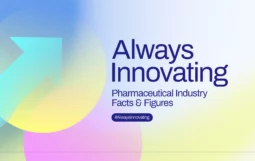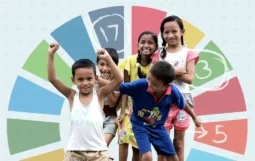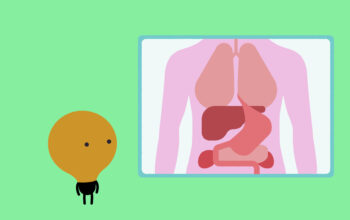Women of Khayelitsha – Writing hope into the history of HIV/AIDS
This blog was first published on Diplomatic Courrier on 1st December 2017.
These humbling, resilient young women are at the epicentre of the continuing HIV/AIDS crisis in South Africa. They’re strong and they need to be. They provide healthcare, lend helping hands to abandoned victims, raise awareness, help shoulder the burden of pain – and act as inexhaustible role models for their community.
I met them at Nolungile Community Health Centre (CHC), based in Khayelitsha (Cape Town), one of South Africa’s largest and fastest-growing townships. Its population has more than doubled in ten years, over half the adults are jobless and young women are especially hit by a high HIV prevalence. Yet, as we approach World AIDS Day (December 1) and remind ourselves that 17 million around the globe still require treatment, these young women give me hope and even confidence the disease can and will be beaten.
A new UNAIDS report, Right to Health, points out that almost 21 million living with AIDS are now on treatment, including 42,000 in Khayelitsha and 4 million in South Africa as a whole. “The success of Khayelitsha’s treatment programme is a microcosm of the massive success of South Africa’s HIV programme,” says Aaron Motsoaledi, the country’s Minister of Health, in the report. Yet, in the earliest part of this century, only 90 South Africans were being treated.
It is a savage reminder that then, almost 20 years ago, the global pharmaceutical industry or at least 39 of its biggest players did what I’ve called one of the “dumbest” things ever: suing the Pretoria government to stop legislation on parallel imports of drugs and generic substitution. The lawsuit was framed in such a way that patents and prices were the main barriers to AIDS treatment. This made the industry appear insensitive and as if it was putting profits above lives. After three painful years, the companies eventually reached an amicable settlement with Nelson Mandela’s South Africa, with an agreement that the South African government and innovative pharmaceutical industry would work together to find solutions for tackling the epidemic — a precursor to the norm today. The recognition that intellectual property is key for future innovation was one element of the settlement, the willingness of companies to make their drugs affordable for patients in poor countries was an equally important element.
Fast forward from those painful years in the early 2000s to today and we’re at the Nolungile CHC and meeting with Mentor Mothers (and mentee mothers) from the mothers2mothers initiative (m2m). This is a brilliant and innovative model that has been running for over a decade and empowers HIV-positive women to serve as mentors who help other HIV-positive women in their communities by providing peer education and psycho-social support.
The achievements of the scheme, which among others has been supported by IFPMA member company Johnson & Johnson and today gets more than 60 per cent of its funding from the South African government, are astounding: It has slashed the rates of mother-to-child transmission of HIV to below 2 per cent, helped families lead longer, healthier lives and ultimately contributed to growth and productivity in the community and country at large.
These young women and mentor mothers, tell heart-wrenching stories. More often than not, the women only find out they are HIV-positive when they are pregnant. Once they tell their partners – and fathers-to-be – the men frequently walk out – leaving the mother to cope alone with the baby and the prospect of giving birth to a child with HIV as well.
The strength demonstrated by these mothers has left a strong imprint on me. In an area of high unemployment, the mothers2mothers initiative is also innovative in that it puts would-be mentors through a rigorous recruitment and training system and treats them as salaried employees, with the intention of helping to develop a sustainable career path. This thereby helps create jobs and promotes financial independence for many women. Interestingly, a 2011 study of former m2m Mentor Mothers in Kenya found that as many as 85% were formally employed post-m2m, compared to only 44% before their involvement with the NGO.
Medical breakthroughs in treating HIV continue to this day. Just this past month, a new fixed-dose once-daily tablet HIV treatment was approved by the U.S. FDA and other developments are in the pipeline. But while treatments for HIV may have transformed it into a chronic disease that can be managed, an estimated 6,000 new infections still occur globally each day, with two out of three in sub-Saharan Africa where young women still bear a disproportionate burden. In fact, girls and young women account for a staggering 74% of new HIV infections among adolescents in sub-Saharan Africa.
My visit to South Africa, however, demonstrated beyond doubt that there are plenty of positive solutions and partnerships on the ground that are dedicated to improving health outcomes and the overall well-being of the population. Indeed, m2m is just one of over 230 active health partnerships involving the pharmaceutical industry of which 103 are in South Africa. One thing I have learned above all is that many Africans are highly motivated to solve their own challenges, using context-specific ideas and cultural knowledge.
They are to ensure that the 17.1 million people in need of treatment, including 1.2 million children, can access the medicines and put HIV prevention back at the top of public health programming, particularly where those new HIV infections are rising. The UNAIDS report highlights that those most marginalized and most affected by HIV are still finding it hard to access the health and social services they urgently need. But it also gives innovative examples of how communities are responding – and Khayelitsha will remain in my memory as just such a beacon of hope.

Photos: Courtesy of Johnson & Johnson
Author






